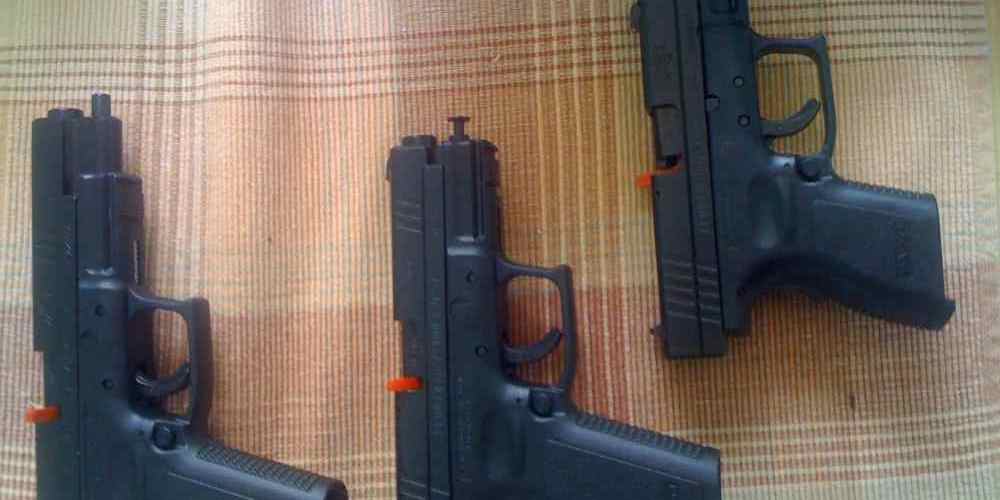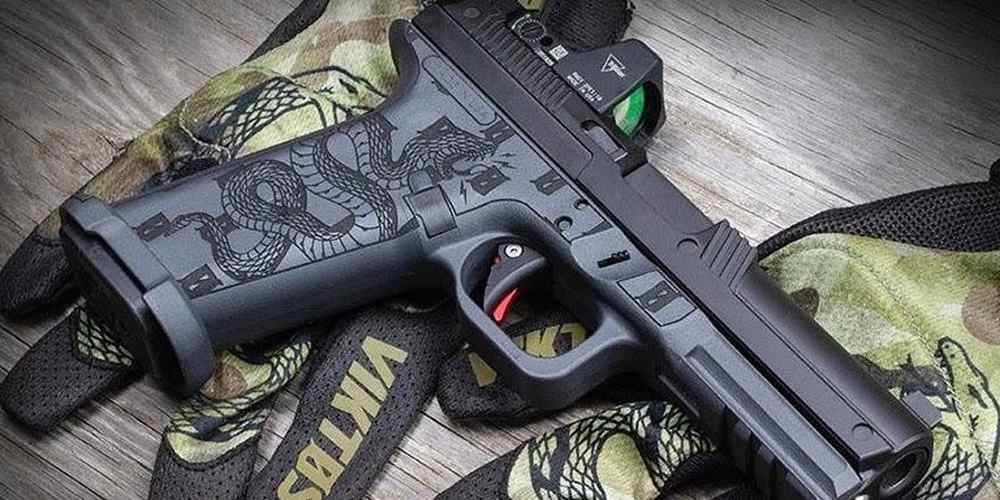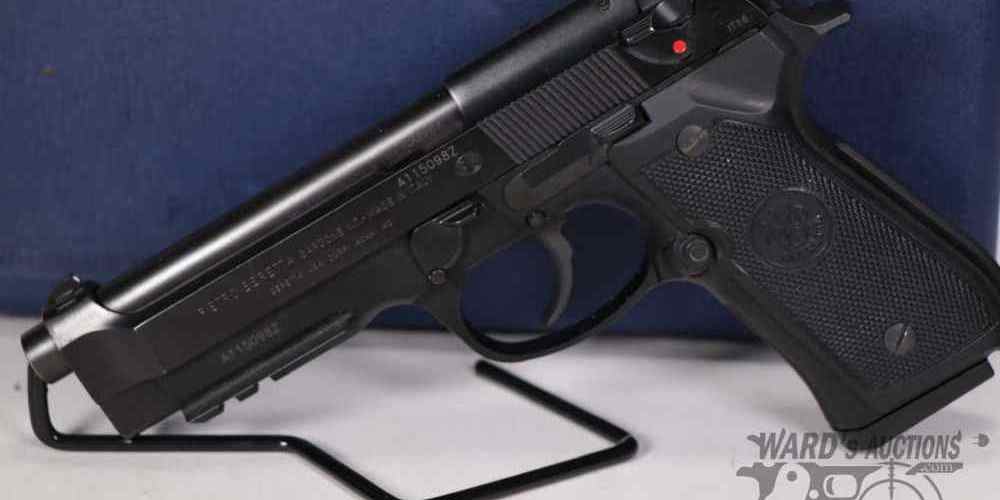“Eliminate malfunctions, enhance performance.”
Proper Grip and Stance
When it comes to shooting a semi-automatic firearm, having the proper grip and stance is crucial for accuracy and control. Many shooters, especially beginners, often struggle with finding the right grip and stance that works best for them. In this article, we will discuss some common misfires that can occur due to improper grip and stance, as well as provide tips on how to overcome these challenges.
One of the most common misfires that shooters experience is known as “limp wristing.” This occurs when the shooter does not have a firm grip on the firearm, causing it to move excessively during the firing process. This can result in failure to feed, failure to eject, and overall poor accuracy. To overcome this issue, it is important to ensure that you have a strong and consistent grip on the firearm. Make sure to keep your wrist firm and locked in place, allowing the recoil to be absorbed properly.
Another common misfire that can occur due to improper grip and stance is known as “pushing” or “pulling” the trigger. This happens when the shooter applies too much pressure in one direction while pulling the trigger, causing the firearm to move off target. To avoid this, it is important to practice proper trigger control. Make sure to apply even pressure on the trigger, using the pad of your index finger, rather than the joint. This will help you maintain accuracy and prevent the firearm from moving off target.
In addition to grip, having the proper stance is also essential for shooting a semi-automatic firearm effectively. One common mistake that shooters make is standing too rigidly or leaning too far back. This can affect your balance and stability, leading to poor accuracy and control. To overcome this, it is important to find a comfortable and balanced stance that works best for you. Keep your feet shoulder-width apart, with your weight evenly distributed between both legs. Lean slightly forward from the waist, allowing your upper body to absorb the recoil.
Another common misfire that can occur due to improper stance is known as “heeling” or “toeing.” This happens when the shooter shifts their weight too far forward or backward, causing the firearm to move off target. To avoid this, it is important to maintain a consistent and stable stance throughout the firing process. Keep your body aligned with the target, with your shoulders squared and your arms extended in front of you. This will help you maintain control and accuracy while shooting.
In conclusion, having the proper grip and stance is essential for overcoming common misfires in semi-automatic firearms. By practicing proper grip techniques and finding a comfortable and balanced stance, you can improve your accuracy and control while shooting. Remember to keep your wrist firm, apply even pressure on the trigger, and maintain a stable stance throughout the firing process. With practice and dedication, you can overcome these challenges and become a more proficient shooter.
Addressing FTF (Failure to Feed) Issues
Semi-automatic firearms are popular among gun enthusiasts for their rapid-fire capabilities and ease of use. However, like any mechanical device, they can experience malfunctions from time to time. One common issue that many shooters encounter is failure to feed (FTF) problems. This occurs when the firearm fails to load a new round into the chamber after firing, causing a stoppage in the shooting process.
There are several reasons why FTF issues may occur in semi-auto firearms. One of the most common causes is improper ammunition selection. Using low-quality or improperly sized ammunition can lead to feeding problems. It is important to always use high-quality, factory-made ammunition that is the correct caliber for your firearm.

Another common cause of FTF issues is a dirty or improperly lubricated firearm. Over time, dirt, debris, and carbon buildup can accumulate in the gun’s action, causing it to malfunction. Regular cleaning and proper lubrication of your firearm can help prevent feeding problems.
Additionally, worn or damaged magazines can also contribute to FTF issues. If the magazine spring is weak or the feed lips are bent or damaged, the rounds may not feed properly into the chamber. It is important to regularly inspect and maintain your magazines to ensure they are in good working condition.
If you are experiencing FTF issues with your semi-auto firearm, there are several steps you can take to address the problem. The first step is to check the ammunition you are using. Make sure it is the correct caliber and of high quality. If you suspect the ammunition is the issue, try using a different brand or type to see if that resolves the problem.
Next, inspect your firearm for dirt, debris, or carbon buildup. If you notice any fouling in the action or chamber, clean the gun thoroughly using a gun cleaning kit. Be sure to also lubricate the moving parts of the firearm to ensure smooth operation.
If the FTF issues persist, check your magazines for any signs of wear or damage. Replace any worn or damaged magazines with new ones to see if that resolves the feeding problems. It is also a good idea to rotate your magazines regularly to prevent spring fatigue.
In some cases, FTF issues may be caused by a weak or damaged recoil spring. If you suspect this is the problem, have a qualified gunsmith inspect and replace the recoil spring if necessary.
By taking these steps and addressing common misfires in semi-auto firearms, you can ensure your gun functions reliably and safely. Remember to always follow proper safety protocols when handling firearms and seek professional help if you are unsure how to address a malfunction. With proper maintenance and care, you can enjoy shooting your semi-auto firearm without worrying about feeding issues.
Troubleshooting FTE (Failure to Eject) Problems
Semi-automatic firearms are popular among gun enthusiasts for their rapid-fire capabilities and ease of use. However, like any mechanical device, they can experience malfunctions from time to time. One common issue that shooters may encounter is a failure to eject (FTE) problem. This occurs when the spent casing fails to properly eject from the firearm after firing, causing a jam and preventing the next round from chambering.
There are several reasons why FTE problems may occur in semi-auto firearms. One common cause is a dirty or fouled chamber. Over time, carbon buildup can accumulate in the chamber, causing the spent casing to stick and not eject properly. To prevent this issue, it is important to regularly clean and maintain your firearm. Make sure to clean the chamber thoroughly with a bore brush and solvent to remove any buildup.
Another common cause of FTE problems is weak or improper ammunition. Using low-quality or underpowered ammunition can cause the firearm to not cycle properly, leading to failures to eject. Make sure to use high-quality, factory-made ammunition that is appropriate for your firearm. Avoid using reloads or handloads that may not meet the necessary specifications for reliable cycling.
Additionally, a worn or damaged extractor can also contribute to FTE problems. The extractor is responsible for gripping the spent casing and pulling it out of the chamber during the ejection process. If the extractor is worn or damaged, it may not be able to properly extract the casing, leading to a jam. Inspect the extractor regularly for signs of wear or damage, and replace it if necessary.
In some cases, an improperly lubricated firearm can also cause FTE problems. Lack of lubrication can cause increased friction between moving parts, leading to malfunctions. Make sure to properly lubricate your firearm according to the manufacturer’s recommendations to ensure smooth operation.
If you are experiencing FTE problems with your semi-auto firearm, there are a few troubleshooting steps you can take to address the issue. First, check to make sure that the firearm is properly cleaned and lubricated. Remove any carbon buildup from the chamber and inspect the extractor for wear or damage.
Next, try using high-quality, factory-made ammunition to see if that resolves the issue. If the problem persists, you may need to have a gunsmith inspect and repair the firearm. They can diagnose any underlying issues that may be causing the FTE problems and make the necessary repairs.
In conclusion, FTE problems are a common issue that shooters may encounter with semi-auto firearms. By understanding the potential causes of these malfunctions and taking proactive steps to prevent them, you can ensure that your firearm operates reliably and safely. Regular maintenance, proper ammunition selection, and attention to detail can help you overcome common misfires and enjoy your shooting experience to the fullest.
Understanding and Correcting Trigger Control Errors
Semi-automatic firearms are popular among shooters for their ease of use and rapid-fire capabilities. However, even experienced shooters can sometimes struggle with common misfires due to errors in trigger control. Understanding these errors and how to correct them is essential for improving accuracy and safety when using semi-auto firearms.
One of the most common trigger control errors is jerking the trigger. This occurs when the shooter pulls the trigger too quickly and forcefully, causing the gun to jerk off target. To correct this error, shooters should focus on applying smooth, steady pressure to the trigger while maintaining proper sight alignment. By practicing proper trigger control techniques, shooters can avoid jerking the trigger and improve their accuracy.
Another common trigger control error is slapping the trigger. This occurs when the shooter quickly and haphazardly presses the trigger, causing the gun to fire unexpectedly. To correct this error, shooters should focus on pressing the trigger smoothly and deliberately, rather than slapping it. By taking the time to press the trigger properly, shooters can avoid slapping the trigger and improve their shooting performance.
In addition to jerking and slapping the trigger, another common trigger control error is anticipating the shot. This occurs when the shooter anticipates the recoil of the gun and flinches before pulling the trigger, causing the shot to go off target. To correct this error, shooters should focus on maintaining proper sight alignment and follow-through while pulling the trigger. By focusing on the fundamentals of shooting and staying relaxed, shooters can avoid anticipating the shot and improve their accuracy.
It is important for shooters to be aware of these common trigger control errors and take steps to correct them through practice and proper technique. By focusing on smooth, steady trigger control and maintaining proper sight alignment, shooters can improve their accuracy and consistency when using semi-auto firearms.
Transitioning from trigger control errors to proper grip and stance, shooters should also pay attention to their grip on the firearm. A common mistake is gripping the gun too tightly, which can cause the shooter to lose control and accuracy. To correct this error, shooters should focus on maintaining a firm but relaxed grip on the firearm, allowing for better control and follow-through when shooting.
In addition to grip, shooters should also pay attention to their stance when using semi-auto firearms. A common mistake is standing too rigidly or leaning back, which can affect balance and accuracy. To correct this error, shooters should focus on maintaining a stable and balanced stance, with their weight evenly distributed and their body aligned with the target. By practicing proper stance and grip techniques, shooters can improve their control and accuracy when using semi-auto firearms.
Overall, understanding and correcting trigger control errors is essential for improving accuracy and safety when using semi-auto firearms. By focusing on proper trigger control techniques, grip, and stance, shooters can avoid common misfires and improve their shooting performance. With practice and attention to detail, shooters can overcome these common errors and become more proficient with their semi-auto firearms.
Clearing Double Feeds and Stovepipes
Semi-automatic firearms are popular among gun enthusiasts for their rapid-fire capabilities and ease of use. However, like any mechanical device, they can experience malfunctions from time to time. Two common misfires that shooters may encounter are double feeds and stovepipes. Knowing how to quickly and effectively clear these malfunctions can make all the difference in a high-pressure situation.
A double feed occurs when two rounds try to enter the chamber at the same time, causing a jam. This can happen for a variety of reasons, such as a weak magazine spring or improper ammunition. When faced with a double feed, the first step is to lock the slide back and remove the magazine. This will prevent any additional rounds from entering the chamber and allow you to access the jammed rounds.
Next, visually inspect the chamber to determine the cause of the malfunction. If you can see the two rounds jammed together, carefully remove them using a tool or your fingers. Be sure to clear any debris or obstructions from the chamber before attempting to reinsert the magazine and cycle the action to chamber a new round.
Stovepipes, on the other hand, occur when a spent casing fails to eject properly and becomes trapped in the ejection port. This can happen if the firearm is not properly maintained or if the shooter is using low-quality ammunition. When faced with a stovepipe, the first step is to lock the slide back and visually inspect the ejection port to locate the trapped casing.
To clear a stovepipe, simply remove the magazine and use your fingers or a tool to extract the spent casing from the ejection port. Be sure to check for any debris or obstructions that may be causing the malfunction before reinserting the magazine and cycling the action to chamber a new round.
Practice is key when it comes to effectively clearing double feeds and stovepipes. Familiarize yourself with your firearm and its components so that you can quickly and confidently address any malfunctions that may arise. Regular maintenance and proper ammunition selection can also help prevent these misfires from occurring in the first place.
In high-pressure situations, such as self-defense or competitive shooting, the ability to quickly clear malfunctions can mean the difference between life and death. By mastering the techniques for clearing double feeds and stovepipes, you can ensure that your semi-automatic firearm remains reliable and functional when you need it most.
Remember, safety should always be your top priority when handling firearms. Always keep your finger off the trigger until you are ready to shoot, and never point your firearm at anything you do not intend to shoot. With proper training and practice, you can confidently overcome common misfires in semi-automatic firearms and enjoy a safe and successful shooting experience.







